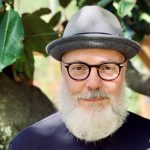Roadside Musings
The Many Definitions of Hope
How do we find hope in dark times? After his recent conversation with Rev. Wendy Van Allen for the S+H Podcast, Rabbi Rami explores his philosophy on how to save humanity from itself.
Q: How many people does it take to save humanity from itself?
A: 36.
This sounds like a joke: a variation on how many “x” does it take to change a lightbulb. In fact, it’s a teaching attributed to the fourth-century Jewish sage Abaye who said there must be at least 36 people awake to Shekhinah (the Divine Feminine manifesting as all existence) and living as a blessing to all the families of the earth to prevent humanity from devolving under the weight of our own ignorance, arrogance, and greed. During my podcast conversation with Rev. Wendy Van Allen, I worried if 36 is enough, and, even if it is, if we can even get to 36.
In her book Relighting the Cauldron: Embracing Nature Spirituality in Our Modern World, Rev. Wendy, like me and so many other spiritual teachers, believes that if there is to be a revolution capable of saving humanity from itself, it must happen one person at a time. Where religions strive for mass conversions and “great awakenings” sweeping across large swaths of a population, we place our hope in small numbers of individuals undergoing a process of awakening that shatters the ego’s illusion of being apart from God, nature, and all beings to reveal the truth that we are always a part of God, nature, and all beings. What troubles me is this: Is our hope misplaced? Do people really want to change?
Take me for example.
I receive dozens of emails each day inviting me to register for courses, seminars, retreats, workshops, and “life-transforming” experiences promising me the enlightenment I say I seek. I enroll in none of these programs for reasons both simple and perverse: simple in that I can’t afford most of them, and perverse in that I don’t trust those I can afford even as I do my best to keep my own programs as affordable as possible. (I’m sure my therapist will have something to say about this.)
Why, with all these options out there, is humanity still sinking into an ever-darkening cauldron of rising fascism, global temperatures, and sea levels?
Maybe we just don’t want to change. Or maybe not enough of us want to change. To use Abaye’s metaphor of the 36 awakened ones, maybe only 35 of us want to awake to Shekhinah. Maybe there aren’t enough of us to change the damn lightbulb. What then? Will we just have to learn to live in the dark?
Rev. Wendy doesn’t think so. She is hopeful. That’s why she keeps teaching. Since I keep teaching as well, maybe I, too, am hopeful. Though if you ask me, I will deny it. Or maybe we have different definitions of hope.
Wendy’s hope is that things will get better. My hope is that things will get worse.
My hope comes from my experience of hitting Rock Bottom repeatedly in my addiction to overeating. It was the grace of being crucified on the cross of my addiction that led to my moments of recovery. Both crucifixion and recovery continue for me, and I am grateful for them, even as I do not see either of them as fixed endpoints but fluid midpoints on a journey whose end is out of my hands.
I see relighting the cauldron of spiritual awakening the same way: The light is always temporary, the dark is the greater truth, and both are precious to me.






